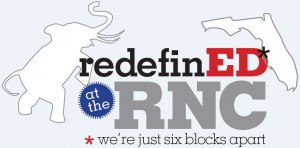by Michael B. Horn
With the rapid growth of online learning - both in full-time virtual learning environments and even more often in blended learning in schools - there is an opportunity to transform the nation’s education system from its factory-model roots to a student-centric one that can customize affordably for different learning needs and thereby bolster every student’s learning and America’s competitiveness.
One of the main reasons the country’s education system fails so many students is because it was never built to help each child realize her fullest potential. Because students have different learning needs at different times - students learn at different paces, have different aptitudes, and have different levels of knowledge when they enter a classroom - harnessing the power of technology to do the positive things it has done in so many other sectors of society is vital.
Although this is an important national opportunity, it does not mean the best way to drive this innovation is from the federal government. That is one reason Digital Learning Now!, an effort led by former Governors Jeb Bush and Bob Wise to seize this transformational opportunity, focuses on the things states should do to create a student-centric education system.
That said, it is important that the federal government support the conditions for transformation - and eliminate onerous requirements for educators on the ground. To further this end, there are several steps it can and should take.
Implement backpack funding: Title I and Title II dollars should follow students down to the educational, not just school, experience of their choice. With the growth in online learning courses, it is important to allow students to access great teachers and the right learning experience for their needs regardless of their zip code.
Promote individual student growth as the measure of performance: Move away from No Child Left Behind’s AYP school site accountability model. Create transparency by having states focus on the growth in learning for each individual student. Given that a student-centric system will recognize that each student has different learning needs at different times, it only makes sense to move to a system that leverages technology and captures how each child is doing in near real time, not just on an annual basis, and can give credit to educators that help a student make meaningful progress regardless of where she started. To the end of creating transparency in the education system around student learning, as well as creating a bigger market to spur private investment in digital learning, supporting the Common Core state standards is also an appropriate role for the federal government - whereas acting as the nation’s education venture capitalist is not. (more…)
Oh how the blog gods have smiled down upon redefinED.
The 2012 Republican National Convention will be held in downtown Tampa this month – six blocks from the building that houses Step Up for Students and our humble blog. I received press credentials to cover the convention. And next week, as a lead-up to the event, we’ll be posting essays from some of the leading voices in school choice and education reform.
Here’s the line up: former U.S. Secretary of Education Margaret Spellings; Chester E. Finn, Jr., president of the Thomas B. Fordham Institute; Robert C. Enlow, president and CEO of the Friedman Foundation for Educational Choice; Joe Williams, executive director of Democrats for Education Reform; Michael B. Horn, executive director for education at the Innosight Institute; and Eva S. Moskowitz, founder and CEO of Success Academy Charter Schools.
With the RNC and November elections as a backdrop, we asked our contributors what – if anything – the federal government can do to promote school choice. It goes without saying that the responses are thoughtful, insightful and informative. They’re also diverse. They’ll give you plenty to think about – and even a few things to laugh at.
First up Monday: Secretary Spellings.